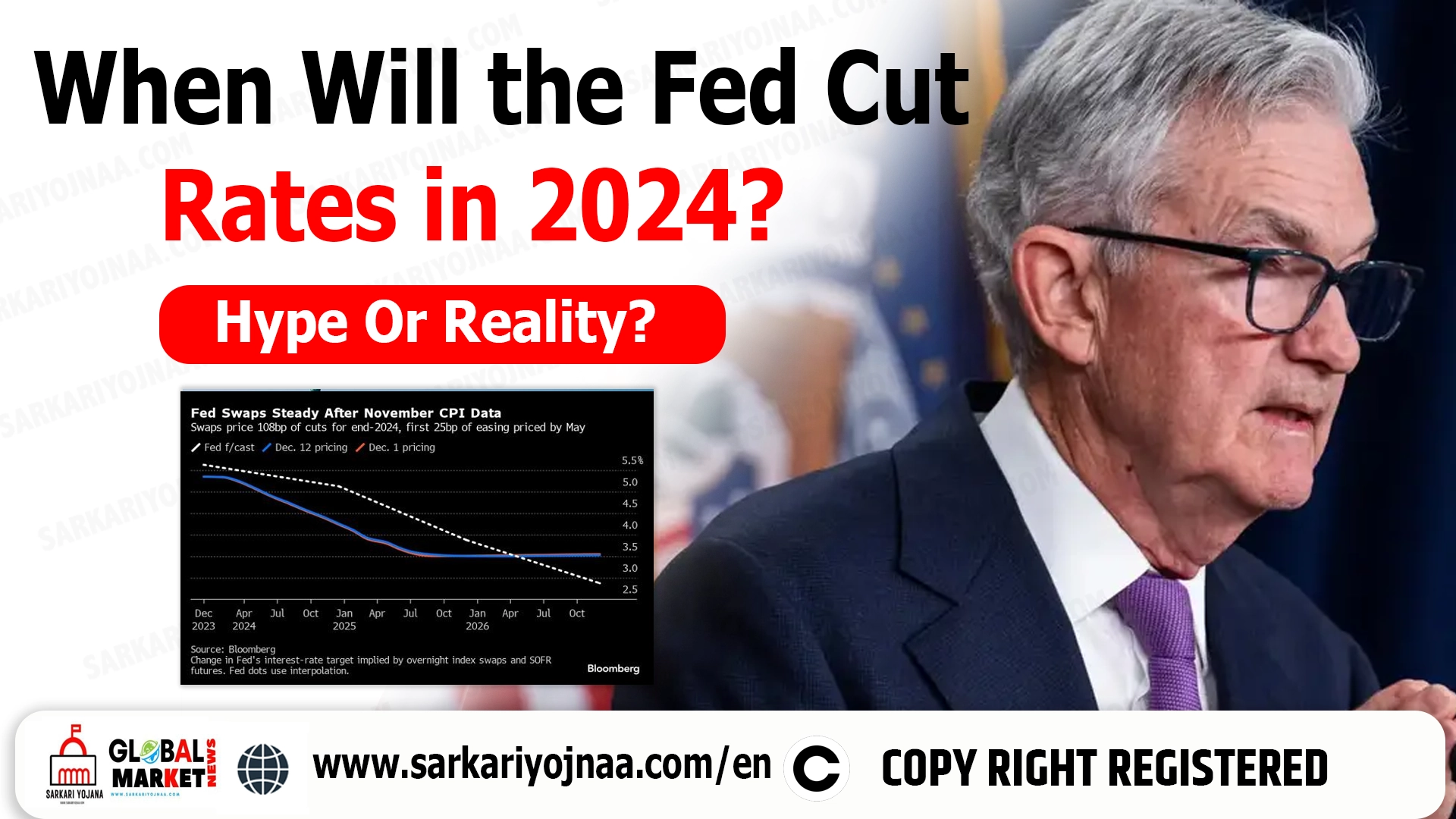When Will the Fed Cut Rates in 2024? The question of when the Federal Reserve will reduce interest rates in 2024 is generating a lot of chatter. There are differing opinions in the market about what might happen. Some experts predict a significant reduction in rates with as many as seven cuts. However, Bob Elliott, the CEO of Unlimited, advises caution and warns against getting too carried away with high expectations. It’s important to take a closer look at the Federal Reserve’s policies and consider what is realistically possible in terms of rate cuts this year.
Know More From Official The Fed – Federal Open Market Committee
- Beyond Sci-Fi Hype: Samsung’s Galaxy S Series Reimagines Mobile with AI
- Feb 2024 Visa Bulletin Breakdown: Navigate Delays & Speed Up Your US Visa Journey
- Maximize Your Social Security: Unveiling the $5,000 Monthly Benefit Strategy for 2024

Why Seven Cuts Might Be a Pipe Dream
Elliott argues that while inflation is moderating, the economy remains robust with growth exceeding potential and unemployment historically low. These factors and the Fed’s mandate to maintain stable prices and maximum employment suggest little incentive for aggressive rate cuts. He emphasizes that central banks tend to act swiftly for economic slowdowns but not necessarily for slight inflation moderation around their target.
Factors Influencing Fed Rate Cut Decisions
| Factor | Impact on Rate Cut Likelihood |
| Inflation | Declining inflation increases the likelihood of rate cuts. |
| Labor Market | Continued low unemployment may make the Fed less inclined to ease policy. |
| Economic Growth | A weakening economy could increase pressure for rate cuts. |
| Financial Market Volatility | Heightened volatility could prompt the Fed to act to stabilize markets. |
| Geopolitical Risks | Major geopolitical events could also influence Fed decisions. |
The “Meaningful Slowdown” Scenario:
Elliott believes that if rate cuts materialize, it would signify a significant economic slowdown, a scenario likely detrimental to stocks. This reinforces his stance against holding stocks if anticipating extensive Fed easing.
Mispriced Risk in the Bond Market?
Elliott believes the bond market underestimates the odds of maintaining rates. He contends that the rapid cuts scenario hinges on a severe growth slowdown, which would trouble equities. This perceived discrepancy between market expectations and economic reality is another reason for his bullish outlook on stocks relative to bonds.
Expert Opinions on Fed Rate Cuts in 2024
| Expert | Opinion |
| Bill Ackman | Predicts cuts in the first quarter due to rising real interest rates and potential for a hard landing. |
| Conor Sen | Advocates for cuts early in 2024 to maintain economic expansion. |
| Bob Elliott | Cautions against expecting too many cuts, citing strong economic fundamentals. |
Official Sources and Market Sentiment Paint a More Nuanced Picture:
- FOMC Minutes: December 2023 hints at a potential policy shift towards easing later in 2024, acknowledging the possibility of slowing rate hikes.
- FOMC Projections: The median dot plot suggests three quarter-point cuts throughout 2024, bringing the target rate down to around 4.5% by year-end.
- Market Futures: They predict around six cuts, starting early in the year, exceeding the Fed’s official projections.
- Economists: Estimates range from three to four cuts, with some expecting them earlier.
- Expert Opinions: Bill Ackman anticipates cuts due to rising real rates and potential economic downturn, while Conor Sen advocates for early easing to sustain growth.
Historical Fed Rate Cut Cycles
| Year(s) | Number of Rate Cuts | Economic Context |
| 1995-1996 | 7 | Soft landing after a period of economic expansion |
| 2001 | 11 | Response to the dot-com bubble burst and recession |
| 2007-2008 | 10 | Attempt to mitigate the financial crisis |
| 2019 | 3 | Pre-emptive action to address slowing growth and trade tensions |
What Does This All Mean?
The 2024 Fed rate cut outlook remains murky, with different factors painting competing narratives. While seven cuts seem unlikely, a gradual easing later in the year appears increasingly probable, hinging on factors like inflation trajectory, labor market conditions, and overall economic growth.
Key Takeaways:
- Don’t get swept away by the hype of dramatic rate cuts.
- Consider the potential downsides of rapid easing for stocks.
- The Fed will likely adjust its policy based on evolving economic data and market conditions.
- Monitor official Fed communication, market signals, and expert analysis.
Remember, the future of Fed policy and its impact on markets remain fluid. By understanding the underlying reasoning and keeping an eye on key indicators, you’ll be better equipped to navigate the uncertainties of 2024 and make informed investment decisions.
FAQ Related To When Will the Fed Cut Rates in 2024
The exact timing and number of rate cuts remain uncertain, but several indicators suggest a shift towards easing in the later part of 2024. The Fed will likely base its decisions on evolving economic data and market conditions.
Estimates vary, with futures markets predicting around six cuts, economists suggesting three to four, and the Fed’s own projections indicating three.
The Fed might cut rates to support economic growth if it slows down significantly or to address persistently low inflation.
Rate cuts can impact markets in various ways, including:
Stocks: Generally considered positive for stocks, as lower rates can boost earnings and valuations.
Bonds: Typically seen as negative for bonds, as lower rates reduce their yields.
Other asset classes: Can also be affected, such as real estate and commodities.
Monitor official Fed communications, such as FOMC statements and minutes.
Track market signals, such as interest rate futures and economic data releases.
Follow expert analysis from economists and financial commentators.




















